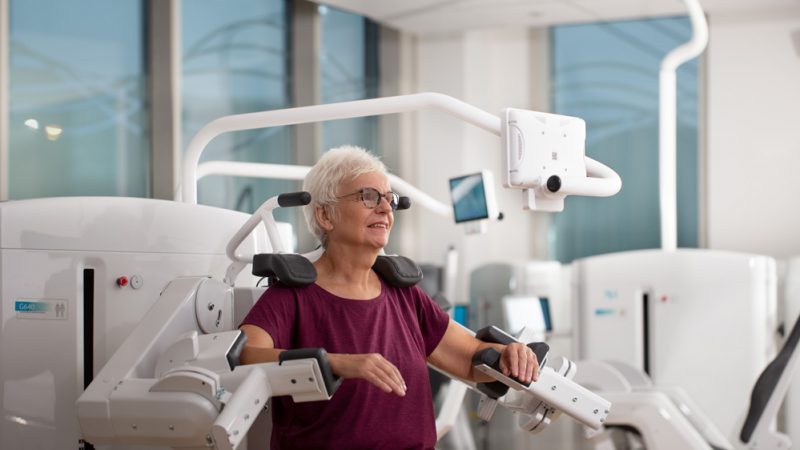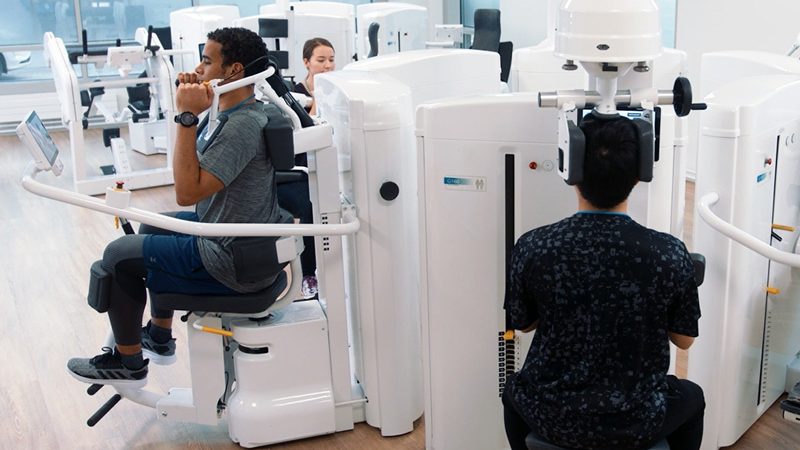Self-management
The modern patient is increasingly becoming a healthcare consumer who is in charge of their own healthcare process. However, something must be done to this process in order to combat challenges such as a growing shortage of physical therapists and an increase in patients. In recent publications, medical guidelines worldwide are increasingly directing self-management within physical therapy. Technology plays an important role in self-management. Self-testing is an excellent example of how control is shifting from the healthcare professional to the patient. The emergence of technology such as self-tests for diabetes with advanced software allows the GP’s EHR and smartwatches to communicate directly to measure heart rate and track exercise results. This objective data is essential for encouraging self-management without over consumption of care and an administrative burden for therapists. Physical therapy is another healthcare field that requires self-management and objective data to streamline care.
The DAVID EVE software monitors the patients’ movements using objective and subjective data through an advanced patient tracking system. EVE functions, in this case, as a virtual assistant and follows and tracks the patients as they exercise. The data can even be monitored in real-time on a remote screen by the therapist, who is not present at the same time. Data that can be observed from a distance includes:
- Compliance score on the progress of the exercise
- Parameters of the exercises (ROM, weight, speed, reps)
- Medical questionnaire responses
- Patients’ feedback
Through patient feedback, the DAVID EVE rehab software can automatically adjust the exercise therapy program based on predefined protocol-based exercise therapy program rules. This helps to ensure a safe training environment.
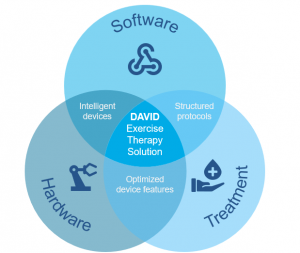
Patient Engagement
The objectives are adjusted and supplemented in consultation with the patient by evaluating objective data and test results. Evaluation of the process increases the patient’s involvement in their recovery process. In 2023, the white-label DAVID consumer app will be available with the following features:
- Monitor test results
- View and answer medical questionnaires
- Make appointments for physical therapy or group training through the app
- Download reports and test results
The app also provides a direct communication channel between healthcare professionals and patients, including:
- Telehealth for remote meetings or text messages
- Personal messages between patient and therapist
- Patient satisfaction surveys
Data collection and Artificial intelligence (AI)
Artificial intelligence (AI) is also changing physical therapy. The AI-powered application can be used for programmable tasks, such as accurately measuring movement and mobility, guiding patients on the correct form during rehabilitation exercises, and collecting and sharing data between patients and PTs. Some of the benefits include improved pain management, improved long-term adherence, and improved clinical oversight for patients. It can likewise help therapists reduce their workload.
But how do we ensure patients’ safety?
First, it is essential to know that DAVID equipment is safety tested and medically certified under class 1 MDR (Medical Device Regulations). Mobility and strength testing on the DAVID equipment always takes place under the supervision of a certified DAVID therapist. During the intake, contraindications are identified before starting the testing process. After the test, the training program is drawn up based on scientifically proven diagnosis-based exercise therapy templates. Finally, the test data is calculated to determine suitable training weight, exercise speed, and Range of Motion.
The following are known:
A: Have outcomes from questionnaires and data from physical test results
B: Standard training protocol based on the diagnosis and test results data
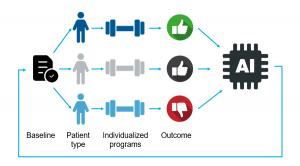
Since everybody responds differently to the exercise, subtle adjustments in the training parameters (think weight resistance progression or reduction, adjustments in ROM) can significantly affect the outcome. For this part, soon, we may use advanced AI to automatically incorporate these subtle adjustments into the rehabilitation exercises without therapist intervention. Thus, it will be possible to generate a high degree of predictability for the recovery process.
Outcome-focused financing of physical therapy care
The cost of care is increasingly becoming a concern for many countries worldwide. Due to ageing, high demands for quality of care, and lack of staff, health insurers are challenged to finance insured care differently. In this situation, outcome-oriented care offers an opportunity to cut costs and increase patient flow.
But what is outcome-based care, and how can we quantify these outcome measures without increasing the administrative burden on healthcare providers?
We can do this by using a patient tracking system and combining it with digital holistic workflows that generate automated data for comprehensive reporting and trends. Imagine having an overview of outcomes per location for each patient group with data that updates in real time. For example, you could report the following data for all patients with a herniated disc:
- Number of patients
- Age
- Gender
- ICD10 code
- Test results
- Exercise Therapy parameters
- Outcomes questionnaires
AI always ensures that, exercise therapy is optimized per patient. In addition, the EVE rehab software provides a transparent overview of patient results, allowing healthcare insurers to confidently purchase care of the best quality.
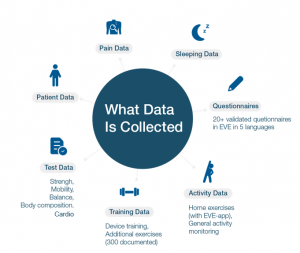
Telehealth
- Communicate remotely with patients
- Prescribe and monitor home exercises through an app
- Track exercise results and store data in the app
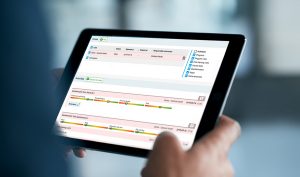
This is how DAVID transforms musculoskeletal care.
 English
English 























